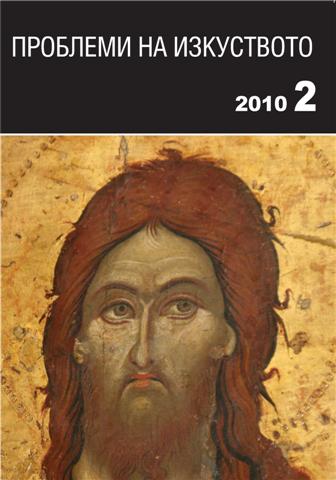Кои са древните мъдреци, изобразени в трапезарията на Бачковския манастир и църквата „Рождество Христово” в Арбанаси?
Who are the ancient Philosophers depicted in the Refectory of Bachkovo Monastery and the Church of the Nativity in Arbanasi?
Author(s): Emmanuel MoutafovSubject(s): Cultural history
Published by: Институт за изследване на изкуствата, Българска академия на науките
Summary/Abstract: For the first time E . Moutafov shows that the Greek texts on the scrolls of the ancient philosophers from the 17th century’ frescoes in the Refectory of Bachkovo monastery and in the church of the Nativity in Arbanasi, Bulgaria, are transferred from a Byzantine manuscript sources of the type „Διήγησις τινος φιλοσόφου περί των επτά Ελλήνων των φιλοσόφων διά την άνω πρόνοιαν”, which are copied out and circulated at the Balkan monasteries during the 16-17th cc . After approving the fact that therе are not ever existing Greek names as Ariklos, Odoneristos, Lysitis, Astakor and Zialigis, the author gives a proof that in Bachkovo’ Refectory are depicted: from South – Homer, Aristoteles, Galenus, Sybila, Plato, Plutarchus; and from North – Aristophanes, Don Trismegistos, Diogenes, Ares kleos, kleomedes and Socrates . In the Arbanasi’ church are represented as follows: kleomedes, Ares kleos, Solon, Diogenes, Pythagoras, Socrates, Homer, Aristoteles, Galenus, Sybila, Plato and Plutarchus . In contact zones like Arbanasi and Bachkovo, where the Greek clergy were surrounded by com- pact masses of Bulgarians in the 17th c ., those texts and images for E . Moutafov are pure Phanariot’ propaganda on behalf of the canonic reputation and antiquity of Constatinople’ Patriarchy, of the Greek self-consciousness and of Greek language . The same phenomenon could be observed on Mount Athos at the same period and earlier . In the Moldo-Valachia during the 16-17th cc ., on the other hand, in spite of Cyrilic epigraphy of the monuments, they are a medium of Ottoman and Phanariot’ strategies for a removal of the Bulgarian element in order to create new, Romanian one, which adores the respectful history and the antediluvian piety of Greeks . In conclusion, for the author the term Iconopathy is not only the pathological state resulting from an excess of images. More generally, it is the corruption of aesthetic experience, brought on by an excess of imagery, or other pathenogenic factors, like in this case, and it is appearing as a result of the mistakes in the manuscript’ sources for those images of the ancient philosophers on the Balkans and Russia, and their appearance results in political factors as well .
Journal: Проблеми на изкуството
- Issue Year: 2010
- Issue No: 2
- Page Range: 15-19
- Page Count: 5
- Language: Bulgarian
- Content File-PDF

